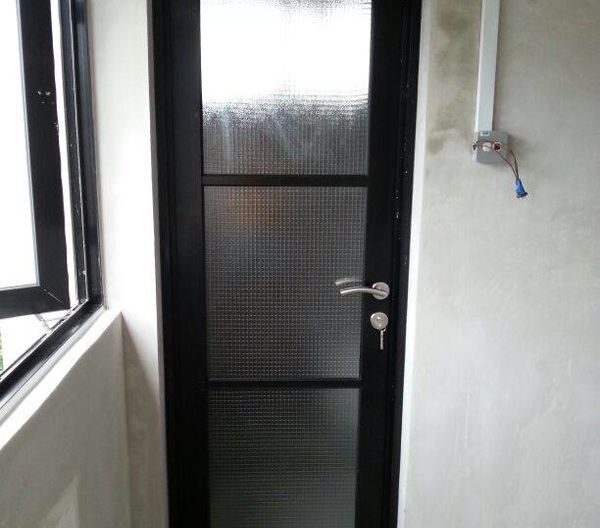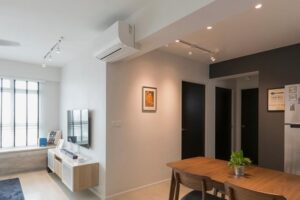
Choosing the right HDB toilet door Singapore homeowners trust involves more than just picking a style. The door must withstand humidity, save space, and suit the overall look of the flat. Since bathrooms in HDB flats are compact, the choice of door can affect comfort, privacy, and even cleaning routines.
This guide explores the best types of toilet doors for HDB flats. It explains the practical benefits of each design and offers tips on how to select one that fits your lifestyle and layout. Whether you’re renovating or replacing an old door, understanding your options will help you decide wisely.
Why Door Choice Matters in HDB Toilets?
Bathrooms experience frequent use, moisture, and occasional splashes. In a limited space like an HDB toilet, a bulky or poorly fitted door can block access or cause mould issues. Good doors balance airflow, water resistance, and space efficiency. Their design contributes to hygiene and ease of cleaning.
To find the right door, you must look at more than just looks. Material, movement, durability, and maintenance all play roles in long-term satisfaction.
Common Door Types Found in HDB Toilets
Different doors serve different needs. The best door for your space may depend on who uses it, how often, and how much room you have near the entrance.
Sliding Doors
Sliding doors remain popular for small bathrooms. They glide along a track mounted at the top or bottom and tuck neatly to one side when open.
Advantages:
- Save space by removing the need for swing clearance
- Create a modern, minimal look
- Reduce collision risk in narrow corridors
Challenges:
- Track maintenance required
- May not seal as tightly as other types
Bi-Fold Doors
Bi-fold doors consist of panels that fold upon themselves when pushed. These panels usually sit on hinges and slide along a rail.
Advantages:
- Good for tight corners
- Easy to open and close
- Lightweight and affordable
Challenges:
- Panels may wear at the joints over time
- Gaps between folds may trap dirt if not cleaned often
Swing Doors
Traditional swing doors remain in use, especially where space allows. Hinged at one side, they open outward or inward.
Advantages:
- Classic appearance
- Offers good privacy and sealing
- Easy to install and replace
Challenges:
- Needs space for swinging
- May hit nearby fixtures or users
Materials That Work Best for Toilet Doors
In humid spaces, not all materials last equally. Some resist moisture better, while others bring aesthetic appeal or cost savings. Picking the right material ensures a longer-lasting and cleaner bathroom experience.
PVC (Polyvinyl Chloride)
PVC doors offer water resistance and are lightweight. They suit budget-conscious users and install with ease.
- Resists rust, moisture, and pests
- Easy to clean and maintain
- Comes in many colours and textures
Aluminium with Acrylic or Glass Panels
Aluminium frames combined with acrylic or frosted glass create a sleek, durable door. These materials hold well against moisture and allow light into dark toilets.
- Lightweight yet strong
- Resistant to dents and corrosion
- Adds a polished look to small spaces
Laminated or Wooden Doors (Less Common)
While rarely used for HDB toilets, laminated or treated wood appears in some designs. Proper sealing is essential.
- Offers warmth and texture
- Needs regular upkeep
- Best suited for dry areas or larger bathrooms
Factors to Consider Before Choosing
With many choices available, knowing how to match function with form matters. The best toilet door doesn’t just look nice—it solves practical issues in daily use.
1. Space Around the Toilet
- Measure the space between the toilet, sink, and entrance. Doors that slide or fold work best in compact setups. Swing doors work when there’s room for them to move freely.
2. User Needs
- Consider who uses the bathroom most often. Elderly users may prefer sturdy, easy-to-grip handles. Children need doors that move smoothly and close quietly.
3. Cleaning and Maintenance
- Toilets require frequent cleaning. A door that resists stains, watermarks, and mould builds makes that easier. Smooth surfaces and fewer gaps help cut cleaning time.
Role of a Good Toilet Door Supplier Singapore
A reliable toilet door supplier Singapore residents depend on plays a key role in finding the right door. These suppliers often stock designs suited to HDB units and understand common layout problems. Good suppliers also advise on installation, safety, and maintenance.
1. Measurements and Fit
- Custom-fit doors improve performance. A proper supplier measures correctly and adjusts for floor gradients or uneven frames. Poor-fitting leads to leaks, noise, and long-term damage.
2. Safety Features
- Suppliers may offer anti-pinch edges or child-safe locks. These small features matter in households with children or elderly residents. A supplier who asks the right questions helps prevent costly mistakes.
3. Warranty and Support
- Even the best doors need occasional fixing. A supplier who provides after-sale support gives peace of mind. They help when parts loosen or panels shift with time.
Matching the Door with Your Bathroom Style
While function matters, so does visual fit. The toilet door connects with the rest of the space and can enhance or clash with the theme.
1. Colour and Finish
- Many people pick neutral tones—grey, white, or beige—for calmness. Others match the door with tiles or fixtures. Frosted panels help block the view while keeping the space bright.
2. Handles and Locks
- Handles may seem minor, but they shape daily use. Slim, curved handles reduce snagging. Locks should work smoothly without sticking or rattling.
When to Replace Your Toilet Door?
Sometimes, old doors stop working well or look worn out. Knowing when to replace helps prevent water damage or accidents.
1. Signs of Damage
- Peeling, rust, warped panels, or loose hinges all signal replacement time. Difficulty in opening or closing may lead to breakage or injuries.
2. Frequent Mould or Odour
- Doors that trap moisture grow mould or smell bad over time. Materials that absorb water should be replaced quickly to maintain hygiene.
Final Thoughts
Choosing the best HDB toilet door Singapore homeowners need takes more than picking what looks good. You should consider how the door functions in everyday life—its operation, water resistance, and suitability for your household.
From sliding doors that save room to bi-fold designs that move with ease, each style fits different needs. Material choices also affect how long the door lasts and how often you need to clean it. With advice from a knowledgeable toilet door supplier Singapore, finding the right match becomes simpler.
In the end, a good door does more than close a room. It supports comfort, privacy, and cleanliness—qualities every home deserves.




